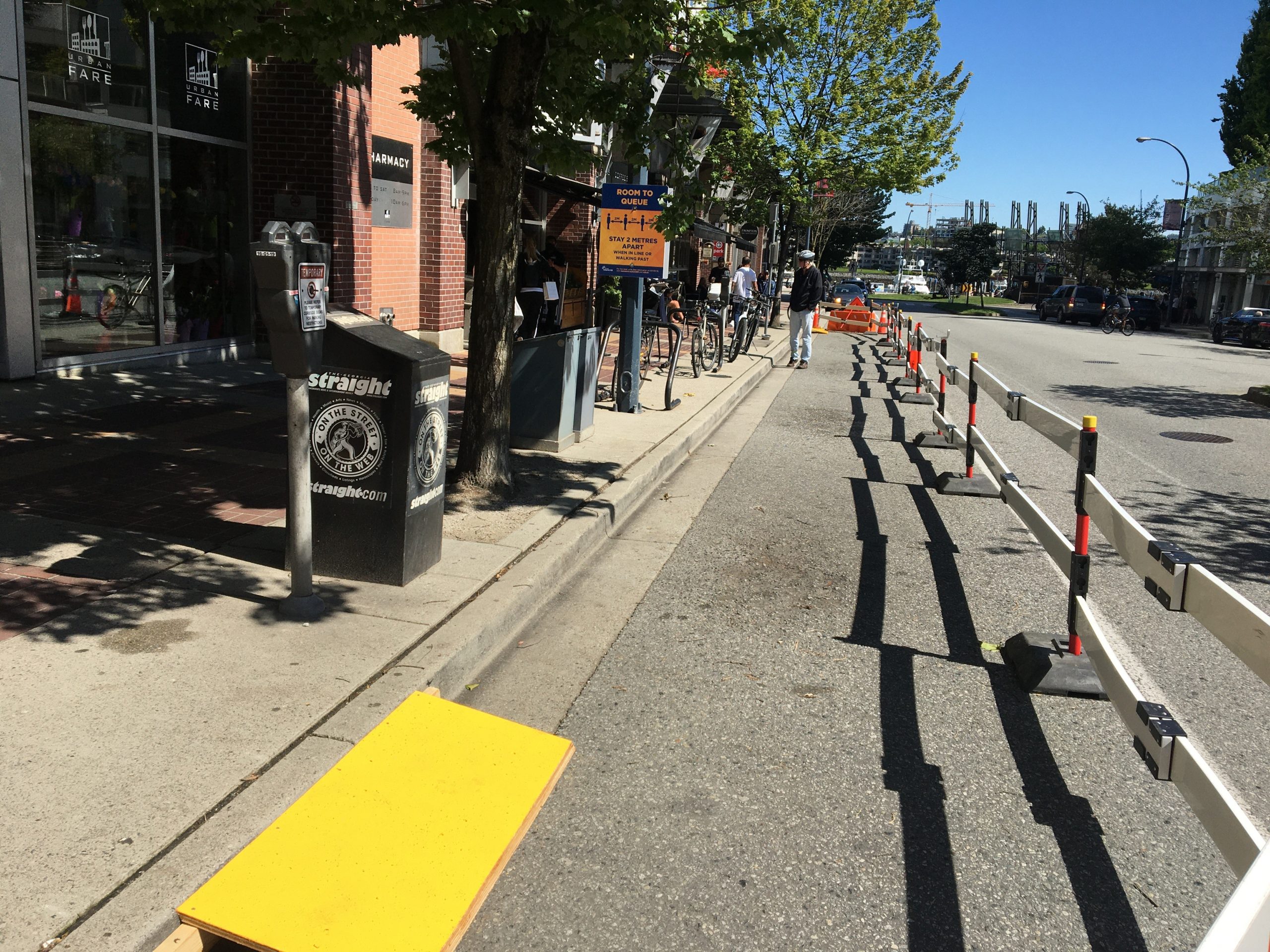I wanted to scribble some notes about grocery shopping because how we’re doing in, in our home, has changed a bunch over the 10 weeks of lockdown, and I want to remember this.
PREVIOUSLY how it worked:
- online supermarket deliveries
- fortnightly supermarket small shops
- weekend visits to butcher/fishmonger/cheese shop/other specialists to particular meals
- supplemented by frequent visits to the local small supermarket for dinner ingredients, milk, etc
NOW it looks like
- fruit/veg box from a company based in New Covent Garden market that used to supply restaurants, and has now started home deliveries. No choice other than size and very seasonal, obviously. Optional extras include salami, courgette flowers, etc
- monthly meat box from the local butcher (who is excellent), mostly for freezing
- occasional fish delivery from the local fishmonger (who is also excellent), mostly for freezing
- monthly online supermarket orders for brand items, canned/dried goods, and cleaning items
- milk/dairy - we’ve signed up for a twice-weekly milk delivery in returnable glass bottles
- flour from one of the two local cafes/bakeries which have pivoted to selling re-bagged wholesale flour
We have a month planner whiteboard magnetically attached to the fridge. We use it to plan childcare, and it also shows the use-by dates of everything in the fridge.
This style of shopping suits me very well. This is what we should have been doing, always.
Incidentally the layout of these ex-cafes, now local flour depots, is worth recording.
It’s one in, one out with a socially distanced queue outside. Inside, the old cafe space is half available goods, and half stockroom. Goods include bread, pasta, granola, that kind of thing, plus re-bagged flour. You stack your goods on a table in-front of the till, and pay contactless using the card machine which is also placed on that table.
This is great for us: there’s a new local website called Dulwich Delivers which simply lists local businesses that deliver. Aside from that, we mostly find out about places from friends on WhatsApp, or by checking out favourite spots on social media to find out if they’re active.
The cafe I mentioned where we get our flour posts their price list and availability as a photo on their Facebook page. They take orders for delivery by Messenger, then call you up to take your credit card details.
The local toyshop delivers, and the person who does the deliveries is the proprietor, on her bike.
For us, a lot of this has happened by necessity.
We don’t have (or want) a car.
Online supermarket delivery slots were barely available to us for the first month or two of the lockdown. The slots we did manage to get, we mainly used to set up deliveries to our parents. So we had to find other sources of groceries.
What’s fascinating to me is when I think about the e-commerce stack, loosely:
- discovery
- store operations
- fulfilment, i.e pick, pack, delivery
These are the three big challenges that any only shop needs to find an answer to, either by doing it themselves, using software, or partnering.
Amazon’s big play is discovery - they have all the buyers in one place, so if you’re a seller, that’s where you go to. Then they handle the store operations and delivery for you.
Or then there’s Shopify, which is really challenging Amazon now. Primarily they provide store operations. Their realisation was that shops can handle their own discovery, on Facebook or otherwise. After all, stores have been doing marketing and customer relationship longer than e-commerce has been around.
Now Facebook has launched Facebook Shops, which looks after discovery and a little bit of store operations, partnering with Shopify for the rest. Ben Thompson (Stratechery) calls this the Anti-Amazon Alliance.
BUT WHAT’S MISSING HERE is local delivery. Last mile delivery. Facebook Shops/Shopify is fine… but it doesn’t do anything for my local butcher with their meat box. Amazon is fine, but it’s optimised for centralised warehouses, not local.
This matters because, when I think about how “discovery” has worked for us, Facebook or no, it has been local first. I always say, word of mouth is unreasonably effective. And word of mouth works best when it’s local.
So “discovery” works locally but “delivery” doesn’t. Hm. Hm.
A few weeks ago I posted about hyperlocal, distributed supply chains, and that got me into a really interesting Twitter DM conversation with Karl from Bloop, a zero-waste store in Bristol.
They’ve been going for a few months, and are well-known by the local community - and (quoting from our chat) We didn’t intend to do things online, but the viral outbreak forced us into that, so now we’re a delivery company too.
The website is an attractive, modern, e-commerce experience.
And I find that really intriguing. What if e-commerce, but only for a 1 mile radius?
Karl shared a few more details. They live above the shop, and he also runs Obelisk which is an audio design agency. Karl has made all his own furniture for the store and it’s all on castor wheels so the space can be easily reconfigured.
(I wrote recently about homes can also be businesses so you can see why this appeals.)
Also quoting Karl: What comes with having a shop like this is a golden ticket into community
- which is amazing, right? You can see the effect you’re having, identify that delivery is a need, spread the word, and come face to face with users (customers!) every day.
So when I think about local delivery, this is where the rubber hits the road for all of this e-commerce stuff. Because it’s necessarily physical, it’s the sole opportunity to be face to face. But delivery, when commoditised and industrialised, also seems to be where things go badly wrong, from delivery drivers bearing the risk of whole corporations to food delivery “independent contractors” barely able to make minimum wage, and being stiffed for tips.
The big question:
Corporations and startups will inevitably move hard into the last mile delivery space. How do we make sure it’s not shit?
It’s going be…
-
Boston Dynamics robot dogs delivering parcels
- Some kind of unholy FedEx-goes-local or white label Uber Eats, making people sweat to earn less than minimum wage
- or… something else? What it is? What would Karl do?
I can imagine a utopian neighbourhood of cheery teenagers on their bikes earning pocket money by delivering my veg box and fancy cheese ordered via Facebook Messenger, and me tipping an extra shilling because I recognise them from last week. But this isn’t 1955 plus social media.
So what is it? How do we make sure it isn’t awful?
I find it hard to imagine utopias, because I’m in the habit of imagining critiques or dystopias or semi-plausible extrapolations of the present. A utopia is a non-extrapolation; it implies some intervention. Politics. I’m not very good at imagining politics.
Science fiction is pretty good at dystopias, it’s not in the habit of utopias either, any longer. And design fiction is good at depicting futures, but design is (inherently, and rightly) commercial, so design fiction’s futures aren’t about utopias but about desire.
I think we need to - I need to - imagine utopias again, and we need to articulate them in great detail, and illustrate everyday situations like this, and we need to demand and create demand for them, because if we don’t then the clearest narrative wins, and currently the clearest narrative is race-to-the-bottom capitalism in the guise of opportunity-for-all.
I’ve had a taste of collectivism and localism these last few weeks, and I don’t want to lightly let it go.

 The coronavirus has changed everything. Larry Buchanan, for The New York Times,
The coronavirus has changed everything. Larry Buchanan, for The New York Times, 





 for a .NET library released in 2020. This, at least 14 part, blog series will cover exactly what that entailed but in short I committed to:
for a .NET library released in 2020. This, at least 14 part, blog series will cover exactly what that entailed but in short I committed to:












 (@tobi)
(@tobi) 



